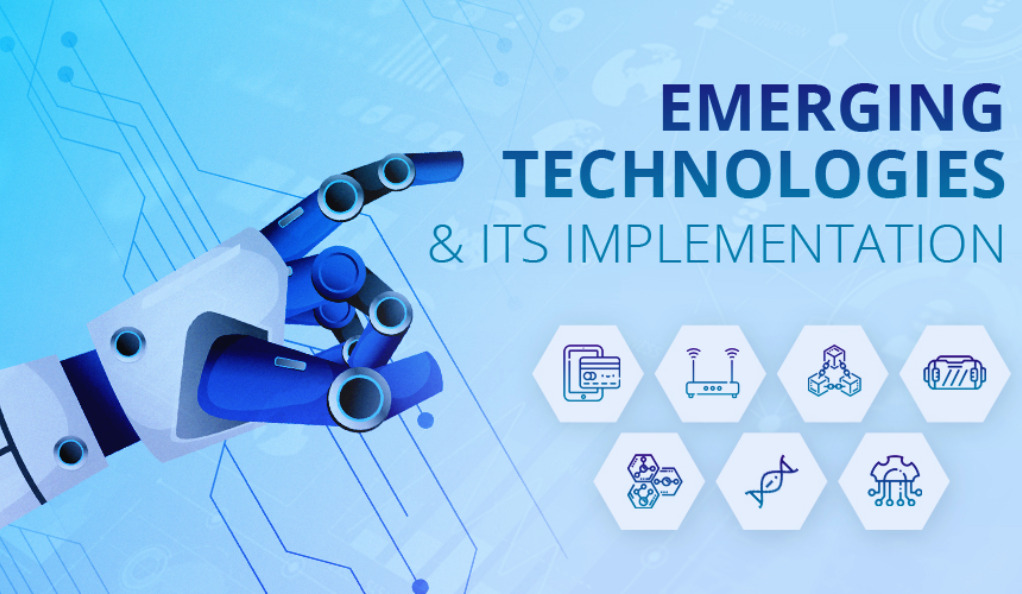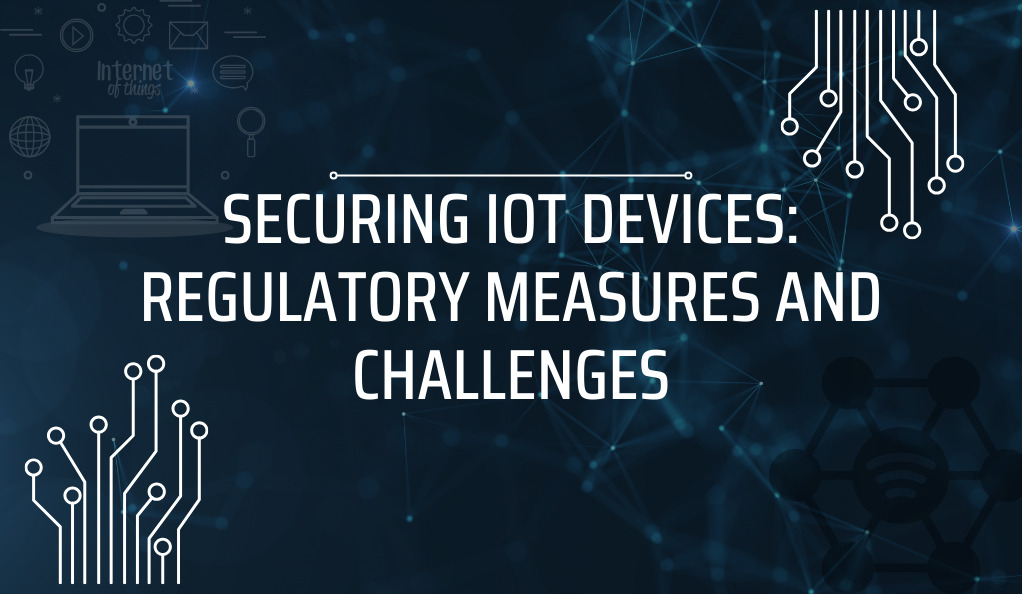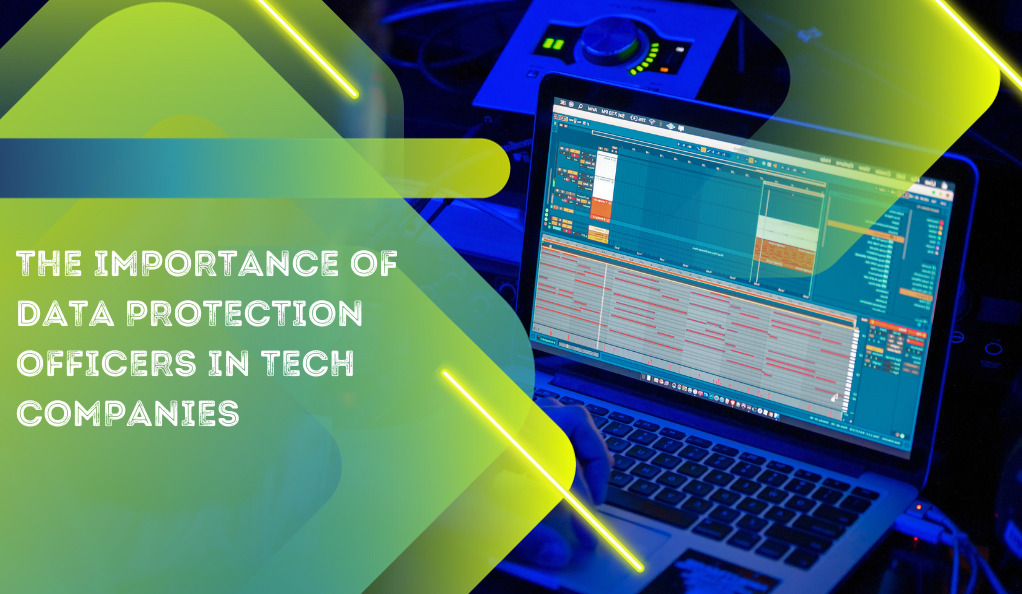In today’s rapidly evolving digital landscape, emerging technologies are at the forefront of innovation, driving change across industries and reshaping the way we live, work, and interact. From artificial intelligence (AI) that can predict consumer behavior to blockchain systems that promise secure and transparent transactions, these technologies offer immense potential. However, with great potential comes great responsibility, especially when considering the compliance implications associated with these advancements.
What Are Emerging Technologies?
Emerging technologies can be defined as those technical innovations which represent progressive developments within various fields of technology. They are often characterized by their radical novelty, rapid growth, and the potential to exert a significant impact on society. Examples include, but are not limited to:
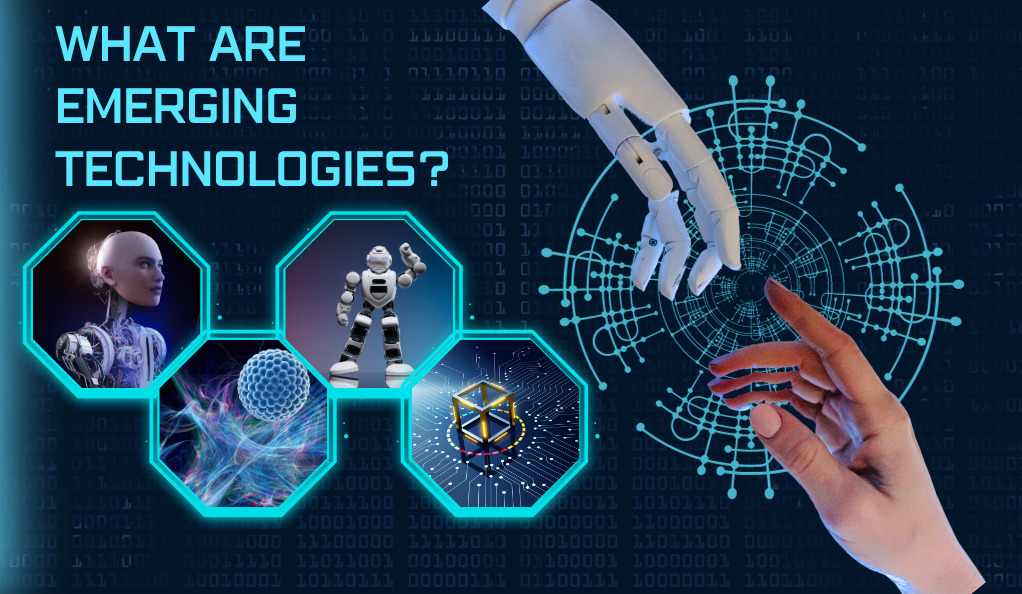
| Technology | Description |
|---|---|
| Artificial Intelligence (AI) | Machines and software that can perform tasks that typically require human intelligence. |
| Nanotechnology | Manipulation of matter on an atomic or molecular scale. |
| Robotics | Design and creation of robots, machines capable of carrying out a series of actions automatically. |
| Blockchain | A decentralized ledger of all transactions across a network. |
Why Compliance Matters
As these technologies integrate deeper into our daily lives and business operations, they bring along a set of challenges, especially in terms of compliance. Compliance, in this context, refers to the need to adhere to regulatory and ethical standards set by governing bodies. These standards are designed to ensure that the technology is used responsibly, ethically, and does not harm individuals or society at large.
For businesses, non-compliance can result in hefty fines, reputational damage, and even legal action. For individuals, it can mean a breach of privacy, loss of personal data, or exposure to cyber threats. Hence, understanding the compliance implications of emerging technologies is not just essential—it’s imperative.
Navigating the Compliance Landscape
The compliance landscape for emerging technologies is complex and multifaceted. Different countries have different regulations, and these regulations are often in flux, trying to catch up with the pace of technological innovation. For instance, while the European Union might have stringent data protection laws under the General Data Protection Regulation (GDPR), other countries might still be formulating their stance on data privacy.
Understanding Emerging Technologies
Emerging technologies, by their very nature, are transformative and disruptive. They challenge the status quo, offering novel solutions to age-old problems and opening doors to possibilities we hadn’t even imagined a few years ago. To fully grasp their compliance implications, it’s essential first to understand what these technologies are and what they promise.
Defining Emerging Technologies
At its core, an emerging technology is a nascent technology that has the potential to significantly alter the business and social landscape, but its broader effects and applications are still relatively unknown. They often start as niche innovations but gradually gain traction, becoming more mainstream as their potential becomes evident.
Characteristics of Emerging Technologies
Several attributes commonly define emerging technologies:
- Innovative Nature: They bring something new or offer a unique twist on an existing technology.
- Rapid Evolution: These technologies develop and adapt at an accelerated pace.
- Potential for High Impact: They have the capability to bring about significant change in industries, economies, and societies.
- Uncertainty & Ambiguity: Their future trajectory and broader implications might not be clear initially.
Spotlight on Key Emerging Technologies
Let’s delve deeper into some of the most prominent emerging technologies of our time:
- Artificial Intelligence (AI): AI is a broad field of study that seeks to create machines capable of intelligent behavior. From chatbots to advanced machine learning algorithms, AI is revolutionizing sectors like healthcare, finance, and entertainment.
- Nanotechnology: This involves manipulating matter on an atomic or molecular scale. It has potential applications in medicine (targeted drug delivery), electronics, and even environmental conservation.
- Robotics: Beyond the realm of manufacturing, robots are now entering our homes (think robotic vacuum cleaners or personal assistant robots) and hospitals (surgical robots). They promise to make tasks easier, more efficient, and often safer.
- Blockchain: Often associated with cryptocurrencies like Bitcoin, blockchain’s decentralized ledger system has broader applications, including supply chain transparency, voting systems, and digital identities.
The Promise & Perils
While these technologies promise to usher in a new era of efficiency, convenience, and innovation, they also come with challenges. The very characteristics that make them groundbreaking—like their innovative nature and rapid evolution—also make them hard to regulate and oversee. This dynamic landscape means that businesses, individuals, and regulators need to be proactive, staying informed and prepared for the challenges and opportunities on the horizon.
Compliance Challenges in Emerging Technologies
As we venture deeper into the realm of emerging technologies, it becomes evident that the rapid pace of innovation often outstrips the speed at which regulatory frameworks can adapt. This misalignment presents a myriad of compliance challenges for businesses, developers, and end-users alike.
The Race Against Time
- Rapid Technological Advancements: The exponential growth of technologies means that what’s considered cutting-edge today might become obsolete in just a few years. This rapid evolution makes it challenging for regulatory bodies to keep up.
- Slow Regulatory Updates: While technology can evolve in a matter of months, regulatory changes often take years, given the need for thorough research, stakeholder consultations, and legislative processes.
Jurisdictional Challenges
Emerging technologies often have a global reach. A blockchain transaction, for instance, could involve participants from multiple countries, each with its own set of regulations.
- Varying Regulations Across Borders: Different countries have different stances on technologies. For instance, while one country might embrace the use of drones for delivery, another might impose strict restrictions.
- Enforcement Difficulties: Even if regulations exist, enforcing them across borders can be a logistical nightmare. How does one penalize a decentralized blockchain network that operates in multiple jurisdictions?
Ambiguity in Interpretation
Given the novelty of emerging technologies, there’s often a lack of clarity about how existing laws apply to them.
- Undefined Terminologies: Many regulatory frameworks might not have provisions for terms like “cryptocurrency” or “quantum computing,” leading to ambiguities in interpretation and application.
- Adapting Existing Laws: In the absence of specific regulations, existing laws are often stretched to fit new technologies, which can lead to misinterpretations and unintended consequences.
Ethical and Societal Implications
Beyond the legal and regulatory challenges, emerging technologies also raise ethical questions.
- Data Privacy Concerns: Technologies like AI, which rely heavily on data, pose significant privacy concerns. Who owns the data? How is it used? What if it’s misused?
- Bias and Fairness: AI systems, if not trained properly, can perpetuate societal biases, leading to unfair or discriminatory outcomes.
- Job Displacements: Robotics and automation, while increasing efficiency, might lead to job losses in certain sectors, raising concerns about economic disparities and societal unrest.
The Role of Regulatory Bodies
In the face of the burgeoning growth of emerging technologies, regulatory bodies worldwide are grappling with the task of creating frameworks that ensure safety, ethics, and compliance without stifling innovation. Their role is pivotal in shaping the future trajectory of these technologies and ensuring they benefit society at large.
Proactive vs. Reactive Regulation
- Anticipatory Regulation: Some regulatory bodies are adopting a forward-thinking approach, trying to anticipate the future implications of technologies and crafting regulations accordingly. This proactive stance helps in preparing for potential challenges before they become pervasive issues.
- Adaptive Regulation: Given the rapid evolution of technology, some regulations are designed to be adaptive, allowing for modifications as the technology landscape changes. This flexibility ensures that regulations remain relevant and effective over time.
Collaboration with Technologists
To truly understand the nuances of emerging technologies, regulatory bodies are increasingly collaborating with technologists, industry experts, and researchers.
- Roundtable Discussions: Regular dialogues between regulators and tech industry leaders can foster mutual understanding and lead to more informed regulatory decisions.
- Pilot Programs: Before rolling out full-fledged regulations, some bodies initiate pilot programs to test the waters, gather data, and refine their approach based on real-world outcomes.
Challenges Faced by Regulatory Bodies
- Keeping Pace: As mentioned earlier, the rapid pace of technological advancement often outstrips the speed of regulatory adaptation, leading to potential gaps in oversight.
- Global Coordination: With technologies having a global reach, there’s a need for international coordination to ensure consistent regulatory approaches and prevent regulatory arbitrage.
- Balancing Act: Striking the right balance between promoting innovation and ensuring safety and ethics is a constant challenge. Over-regulation can stifle growth, while under-regulation can lead to unintended negative consequences.
Technological Convergence and Compliance Complexity
The modern technological landscape is not defined by isolated innovations. Instead, we’re witnessing a convergence of multiple technologies, where distinct innovations intertwine and amplify each other’s capabilities. This convergence not only multiplies the potential benefits but also adds layers of complexity to the compliance landscape.
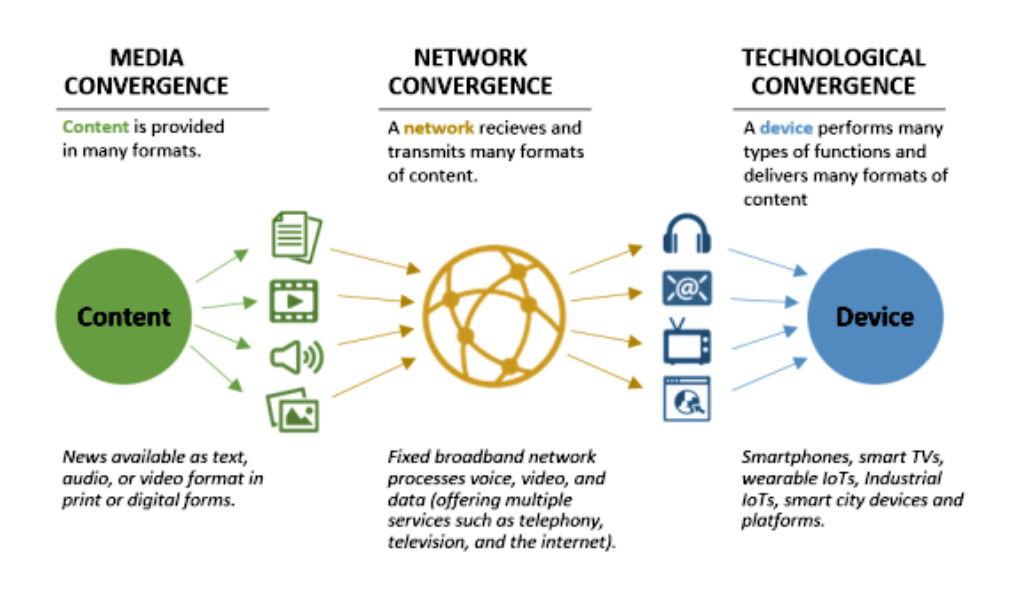
Understanding Technological Convergence
Technological convergence refers to the merging of distinct technologies, industries, or devices into a unified whole. It’s the phenomenon where your smartphone isn’t just a phone but also a camera, a computer, a GPS, and a music player.
Examples of Convergence in Emerging Technologies
- AI and IoT (Internet of Things): AI algorithms use data from IoT devices to make intelligent decisions. For instance, smart thermostats learn from your preferences and adjust the temperature based on your habits.
- Blockchain and AI: Blockchain can provide transparent and immutable data storage for AI algorithms, ensuring data integrity. Conversely, AI can enhance blockchain processes by optimizing data handling or predicting fraudulent activities.
- Robotics and Augmented Reality (AR): Robots can use AR overlays to better interpret their surroundings and perform tasks more efficiently.
Implications for Regulation
The convergence of technologies presents unique challenges:
- Overlapping Jurisdictions: When two technologies converge, they might fall under the purview of different regulatory bodies. For instance, a drone delivering medical supplies involves both aviation and healthcare regulations.
- Unforeseen Challenges: The combination of two technologies can lead to unforeseen challenges that neither would pose on its own. For example, the convergence of AI and biotechnology might raise new ethical concerns around bio-data privacy.
- Rapid Evolution: Converging technologies can evolve faster than their individual counterparts, making it even harder for regulations to keep pace.
Strategies for Navigating Convergence
- Interdisciplinary Collaboration: Regulatory bodies must collaborate across sectors and expertise areas to understand and address the challenges posed by converging technologies.
- Stakeholder Engagement: Engaging with technologists, businesses, and the public can provide diverse perspectives and insights, leading to more comprehensive and effective regulations.
- Flexible Regulatory Frameworks: Given the dynamic nature of technological convergence, regulations must be adaptive, allowing for modifications as technologies evolve and intersect in new ways.
Ethical Considerations in Emerging Technologies
While the compliance challenges of emerging technologies are undeniably complex, they are further compounded by ethical dilemmas. These technologies, with their transformative potential, often tread the fine line between innovation and ethical responsibility. As we integrate them deeper into our societal fabric, it becomes imperative to address these ethical considerations head-on.
The Ethical Landscape
- Transparency and Accountability: As algorithms and machines make more decisions, understanding how they arrive at those decisions becomes crucial. It’s essential for users to know if an AI system is making unbiased choices or if there’s transparency in how a blockchain transaction occurs.
- Privacy and Autonomy: With the proliferation of data-driven technologies like AI and IoT, concerns about data privacy have skyrocketed. Ensuring that personal data is not misused or accessed without consent is a significant ethical challenge.
- Bias and Discrimination: AI systems, trained on historical data, can inadvertently perpetuate or even amplify societal biases. Ensuring fairness and avoiding discriminatory outcomes is a pressing concern.
- Safety and Security: As technologies like robotics and AI become integral to sectors like healthcare or transportation, ensuring their safety and security is paramount. A malfunctioning medical robot or a compromised AI-driven car can have dire consequences.
Balancing Innovation with Ethical Considerations
- Ethical By Design: Instead of retrofitting ethics into technologies, the design phase should incorporate ethical considerations. This proactive approach ensures that technologies are built on a foundation of ethical principles.
- Stakeholder Involvement: Ethical considerations should not be the sole domain of technologists. Engaging a diverse group of stakeholders, including ethicists, sociologists, and the general public, can provide a holistic view of potential ethical challenges and solutions.
- Continuous Monitoring: The ethical implications of a technology might not be apparent immediately. Continuous monitoring and assessment can help in identifying and addressing ethical issues as they arise.
The Role of Technology Developers and Users
- Education and Awareness: Developers should be educated about the potential ethical implications of their creations. Similarly, users should be made aware of how technologies work and their associated ethical considerations.
- Ethical Guidelines and Codes: Many industries and organizations are adopting ethical guidelines or codes of conduct for emerging technologies. These guidelines serve as a roadmap for developers and users, ensuring that technologies are used responsibly.
- Feedback Loops: Creating mechanisms for feedback from users and other stakeholders can help in refining technologies, ensuring they align with ethical standards and societal values.
Conclusion
In the rapidly evolving landscape of emerging technologies, the interplay between innovation and compliance underscores the dual-edged nature of progress. While these advancements promise to revolutionize industries and enhance our daily lives, they also bring forth complex challenges that demand vigilance, foresight, and a collective responsibility. It’s imperative that businesses, regulators, technologists, and consumers collaborate, ensuring that the digital age’s marvels benefit society at large without compromising ethical and societal values.
As we navigate this intricate journey, education and open dialogue emerge as pivotal tools. They empower individuals and organizations to understand and harness the potential of these technologies responsibly. The vision for the future is one of harmony, where technological progress aligns seamlessly with human values, creating a world where innovation serves as a beacon of hope, opportunity, and shared prosperity.

